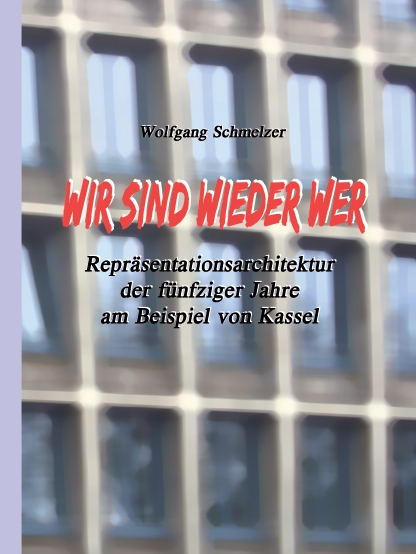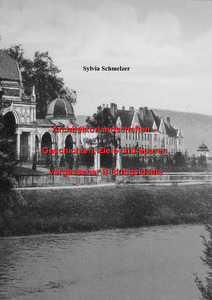Sylvia Schmelzer
e-book
177 und XXV Seiten
Veröffentlicht am 9. Juli 2019
ZusammenfassungEin
Blick aus dem Autofenster hat
mir im Winter eine Landschaft
gezeigt, die ich in den anderen Jahreszeiten so
noch nie wahrgenommen hatte. Dieser Blick hat nur
einige Sekunden gedauert,
aber ausgereicht, meine Neugier
zu wecken und
interdisziplinär im Schnittfeld
von
Architektur
und
Bildung,
mit kunstwissenschaftlicher
Architekturgeschichte zur Analyse, zu forschen. Mit meinen
Bildungsspaziergängen möchte ich Entdecken und
folglich das Entdeckte sichtbar machen,
um die Ideengeschichte der jeweilige Gesellschaftsform, die
Historizität und die
Motivation der Entstehung darzulegen.
Lucius Burckhardt mit
der Promenadologie, Anthony Giddens mit
raum-zeitlichen Betrachtungen zum Thema Geschichte,
Vergessen und Erinnerung
und Michel Foucault mit
seinen Heterotopien, stehen
mir bei der Bearbeitung meines Themas zur
Seite. Diese Arbeit dreht sich einerseits
um ein regionales
Thema, die Kasseler Stiftung der Brüder Georges und
Conrad Lenoir, als auch um international
bekannte Beispiele von
Bazon Brock und Joseph Beuys, Walter Gropius und Daniel
Libeskind.Jeremy Benthams Panopticon, Philipp Melanchthon, Jan
Amos Comenius, Jakob Philipp Spener, die Landgrafen
Carl und Friedrich II.
von Hessen-Cassel und
die in Kassel lehrenden
Professoren Georg Forster, Samuel
Thomas Soemmerring und Johannes von Müller werden
beispielhaft
erwähnt. Charles-Frédéric Necker und
Jean-Jacques Burlamaqui
sind impulsgebend
für die Gründungen der
Casseler Kunstakademie, Lyceum und
Museum Fridericianum. Weil die
Bildungsideale von Rousseau,
Pestalozzi und Humboldt
bis heute
starken Einfluss
auf unser Bildungssystem
haben und George André
Lenoirs Stiftung durch August
Hermann Francke, Vincent von
Paul, Johann Hinrich
Wichern und Johann Heinrich
Pestalozzi geprägt ist, so lassen sich, trotz des Scheiterns
der Lenoir`schen Bildungs-Landschaft, neohumanistische
Inspirationen für die
Bildungspolitik entdecken. Auch Johann
Joachim Winckelmann, das Casseler
Architekturbüro Eubell &
Rieck, der Bildhauer Hans Everding
und der Eklektizismus, aber auch Ludwig Emil Grimm,
Ernst Koch, Heinrich
Tessenows Schulpläne, Wilhelm Schütte und Ernst May in
Frankfurt, Aldo van Eycks labyrinthische Klarheit und Aldo Rossis
Meinung sowie Johanna Spyris Heidi
geben einen Einblick in
Bildungs-Landschaften. Was sind
Bildungs-Landschaften wie ich
sie verstehe? Welche Art
von Bildung kann von
der Bildungs-Landschaft aus auf
das Individuum wirken?
Für meine Bildungslandschaften ist
das Individuum an sich,
aber auch die Synthese
von Bildung und
Architektur von Bedeutung. Das
sich bildende Individuum
steht im Zentrum meiner Bildungslandschaften.
 Synopsis
Synopsis
Architectural landscapes - “histories“, goals and traces of forgotten educational ideals
A
glimpse out of the car window in wintertime opened to me a landscape
that I had never seen in any other season. It was but a short
glimpse of merely seconds that lead me to start
research in the interdisciplinary, overlapping
field of architecture and
education, with the help
of art history for
the analysis. Through educational
promenades I want to discover
and as a result, make the discovered public to
give an outline of the backgrounds of the social structure, of its
history and motivation. Lucius Burckhardt with Strolollogie, Anthony
Giddens about space and
time in history,
vanishing and remembering
and Michel
Foucault with his
Heterotopies, will help me in my attempt. This project has on one hand
a regional theme, the Kassel-Trust of the brothers
Georges and Conrad
Lenoir, and on the
other its about
international known examples like
Bazon Brock and Joseph Beuys,
Walter Gropius and Daniel Libeskind.
The Panopticon
by Jeremy
Bentham, Philipp Melanchthon,
Jan Amos Comenius,
Jakob Philipp Spener, the landgraves Carl and Friedrich II.
of Hesse-Cassel and the
professors Georg Forster, Samuel
Thomas Soemmerring and
Johannes von Müller that all
taught in Cassel will
be mentioned. Charles-Frédéric
Necker and Jean-Jacques
Burlamaqui gave the impulse for the founding of the Cassel
Academie of Art, Lyceum and Museum Fridericianum. Because the
educational ideals of Rousseau, Pestalozzi and
Humboldt are still
today of importance, and
George André Lenoirs
Foundation was inspired by
August Hermann Francke,
Vincent von Paul, Johann
Hinrich Wichern and
Johann Heinrich Pestalozzi,
therefore, even in the
light of the fail
of the Lenoir educational-landscape,
neohumanistic inspirations for educational-politics
can be discovered. From Johann Joachim Winckelmann, the Cassel based
architectural office Eubell & Rieck, the sculptor Hans
Everding and eclecticism,
but also Ludwig Emil
Grimm, Ernst Koch, Heinrich
Tessenows plans for Schools, Wilhelm Schütte
and Ernst May in Frankfurt, Aldo van Eycks labyrinthine clarity
and Aldo Rossis opinion to
Johanna Spyris Heidi give
insights into educational-landscapes. What are
educational-landscapes in my terms? What kind
of education can evolve
from educational-landscapes on to
the individuals? My
educational-landscapes have their focus on the individual as well
as on the subject
orientation. The educational individual is the center of my
educational-landscapes.


 Synopsis
Synopsis
 Synopsis
Synopsis
